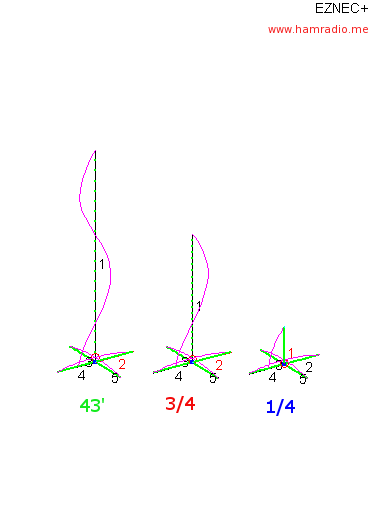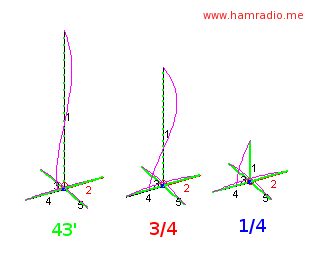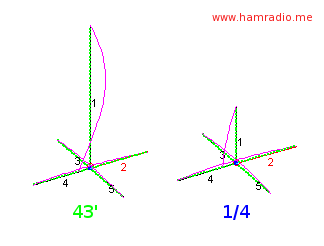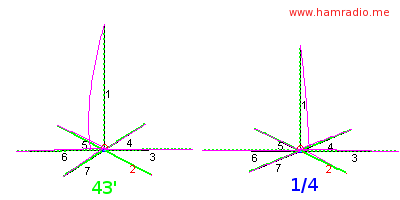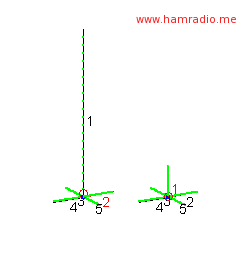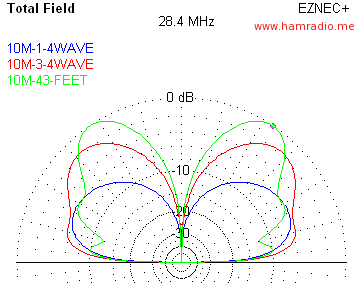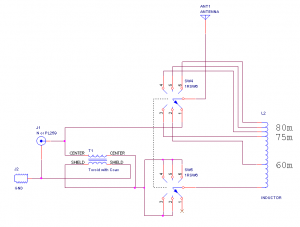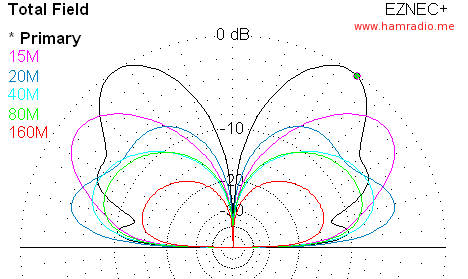As we continue our EZNEC simulation research for the 43 foot and BigIR antennas we finally are looking into the 80 meter band.
Both antennas are short for this band.
The 43 foot antenna uses an antenna matcher (tuner) somewhere in the transmission line to offset the non-resonant impedance; This is the case for all bands except, possibly, the 60 meter band where 43 feet is close to a quarter wave.
The BigIR max height is about 32 feet or about an 1/8 wave antenna. The BigIR continues to not need an antenna matcher by adding an inductance in series with the 32 foot radiator. This inductance brings the antenna system into resonance with a resulting impedance of about 13 ohms. A 4:1 balun wound on an internal toroid transforms this to about 50 ohms… a slick system.
Here are the two antennas with radials appropriate to 80 meters…
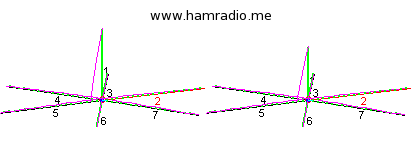
…and the plots…
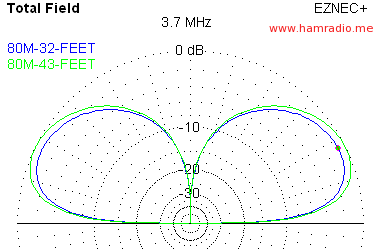
Very very close…
Points include:
- Both antenna exhibit 0 dBi gain peaking around 25 degrees
- Like with 40 meters, the 43 foot antenna puts just a little more higher current conductor higher in the air, but just a little
- The SWR for the BigIR calculates fine for this, but I have found EZNEC a bit difficult to predict SWR with real-world lengths. The folks at SteppIR suggests the SWR will be under 2:1 for the 80 and 75 meter bands when using their 80m option coil
- I could not simulate any respectable SWR with EZNEC for anything between 3.5 and 4.0 MHz – I suspect your results may be better since folks seem to have reasonable results
I would call these results a wash. Both antennas work on 80 even though both are short for this band. It might seem surprising they are so similar despite the height difference. However, this pattern similarity reveals not all of an antenna’s length is actually used for radiating effectively. Indeed, the high current portion of the antenna does much of the work and in this case the lower portion of the antenna is this higher current area.
